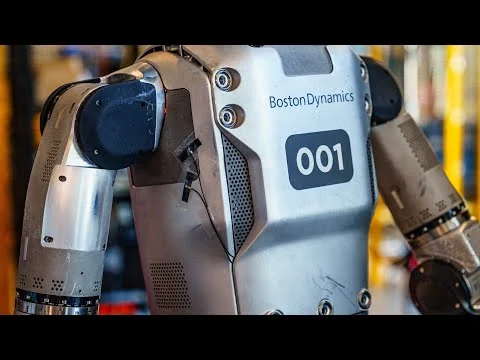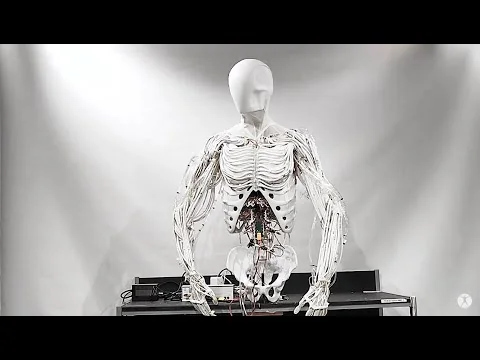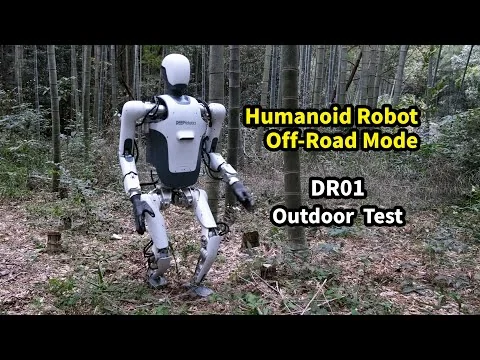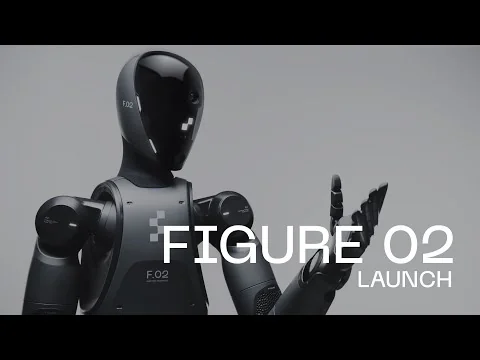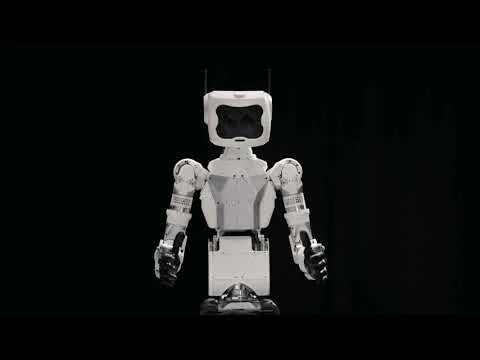Boston Dynamics Atlas Electric: The Humanoid Robotics Revolution
Introduction
In April 2024, Boston Dynamics made robotics history by unveiling its electric Atlas, succeeding the legendary hydraulic version. This transition to electric represents much more than a simple technological change: it's the dawn of a new era for humanoid robots destined for commercial applications.
End of an Era: Hydraulic Atlas (2013-2024)
For over a decade, the hydraulic Atlas defined performance standards in humanoid robotics. Its spectacular feats - backflips, parkour, heavy object manipulation - captivated the world while pushing the boundaries of what's possible.
Why Abandon Hydraulics?
- Maintenance complexity: Hydraulic systems requiring specialized expertise
- Energy consumption: Limited efficiency due to hydraulic losses
- Noise pollution: Hydraulic pumps incompatible with civilian environments
- Leaks and contamination: Environmental and safety risks
- Operating cost: Complex and expensive maintenance
Atlas Electric: A Revolutionary Approach
Technical Specifications
- Height: 1.50m (more compact than hydraulic version)
- Weight: ~89kg (20% reduction vs hydraulic)
- Propulsion system: 28 high-performance electric actuators
- Autonomy: 2-3 hours in intensive use
- Payload: 25kg in continuous manipulation
- Movement speed: Up to 2.5 m/s
Major Technological Innovations
Next-Generation Electric Actuators
Boston Dynamics has developed revolutionary electric actuators offering:
- Exceptional power density: Optimized power-to-weight ratio
- Precise control: Micrometer positioning
- Instant response: Sub-millisecond reaction times
- Energy regeneration: Recovery during descent movements
New Control Architecture
- Integrated AI: Machine learning for behavioral adaptation
- Predictive control: Movement anticipation for balance optimization
- 360° perception: Lidar, camera, and IMU data fusion
- Autonomous navigation: Real-time SLAM mapping
Capabilities and Performance
Exceptional Mobility
- Complete head rotation: Unprecedented omnidirectional vision
- Multi-axis joints: Superhuman range of motion
- Dynamic balance: Automatic recovery after disturbances
- Obstacle traversal: Automatic adaptation to complex terrains
Advanced Manipulation
- Adaptive grasping: Automatic adjustment to object shapes
- Bimanual manipulation: Precise coordination of both arms
- Force control: Real-time adjustment based on object fragility
- Fine manipulation: Ability to manipulate objects of just a few grams
Targeted Commercial Applications
Industry and Logistics
- Warehouse automation: Automated picking and packing
- Assembly lines: Integration with existing industrial robots
- Industrial maintenance: Interventions in hazardous environments
- Construction: Transport and positioning of heavy materials
Services and Security
- Site surveillance: Autonomous 24/7 patrols
- Emergency response: Search and rescue in hostile environments
- Demining: Explosive neutralization with millimeter precision
- Infrastructure inspection: Bridge, tunnel, and facility monitoring
Comparison with Competition
vs Tesla Optimus Gen 2
- Pure performance: Atlas superior in agility and speed
- Price: Atlas more expensive (~$150k vs Tesla's $20k target)
- Target market: Industrial vs Consumer
- Maturity: Atlas more technically advanced
vs Honda ASIMO (legacy)
- Performance: Atlas vastly superior in all aspects
- Commercialization: Atlas targets market vs ASIMO pure research
- Scalability: Atlas architecture designed for continuous improvement
Challenges and Limitations
Persistent Technical Challenges
- Energy autonomy: 2-3h remains limiting for certain applications
- Shock resistance: Relative fragility of electronic components
- Extreme conditions: Degraded performance in extreme cold or high humidity
- Residual noise: Electric actuators still audible
Commercial Obstacles
- High initial price: Complex ROI demonstration for certain applications
- Social acceptance: Psychological resistance to humanoid robots
- Personnel training: Need for specialized expertise for operation
- Insurance and liability: Legal framework still in development
Impact on the Robotics Industry
Technology Catalyst
Electric Atlas accelerates innovation throughout the ecosystem:
- Components: Stimulates development of more performing actuators
- AI: Pushes limits of intelligent robotic control
- Batteries: Encourages innovation in high-density energy storage
- Sensors: Democratizes use of advanced sensors
New Competitive Dynamics
- Race to electrification: Other players accelerate electric transition
- Industry standards: Defines new performance benchmarks
- Partner ecosystem: Catalyzes creation of integrator network
Roadmap and Future Developments
Planned Short-term Developments (2024-2025)
- Autonomy improvement: Goal of 6-8 hours of use
- Cost reduction: Manufacturing optimization for price reduction
- Specialized variants: Versions dedicated to specific applications
- Developer SDK: Platform opening to integrators
Long-term Vision (2025-2030)
- Series production: Transition to thousands of annual units
- Conversational AI: Integration of advanced voice assistants
- 5G/6G connectivity: Distributed control and cloud intelligence
- Civilian applications: Expansion to public and domestic services
Socio-Economic Implications
Labor Market Transformation
- Advanced automation: Replacement of complex physical tasks
- New professions: Emergence of humanoid robotics specialists
- Training and retraining: Need to adapt skills
- Productivity: Potential for significant improvement in industry
Ethical and Societal Questions
- Social acceptability: Gradual integration into society
- Safety and reliability: Guarantees needed for mass adoption
- Privacy: Issues related to surveillance capabilities
- Inequalities: Risk of widening gaps between companies
Early Deployment Feedback
Pilot Industrial Partners
Boston Dynamics collaborates with several major groups to validate applications:
- Hyundai Motor Group: Integration in automotive assembly lines
- Logistics companies: Tests in real warehouse environments
- Energy sector: Maintenance of offshore oil installations
Initial User Feedback
- Exceptional performance: Capabilities exceeding initial expectations
- Reliability to improve: Some failures requiring adjustments
- Training necessary: Learning curve for operators
- Promising ROI: Return on investment visible after 18-24 months
Conclusion
Boston Dynamics' electric Atlas marks a historic turning point in the evolution of humanoid robotics. By abandoning hydraulics in favor of electric power, the company is not merely evolving its technology: it's paving the way for mass commercialization of humanoid robots.
Atlas Electric's exceptional performance, combined with its design oriented towards commercial applications, positions this robot as the precursor of a new generation of robots destined to transform industry, logistics, and potentially many other sectors.
However, significant challenges remain: high cost, limited autonomy, and the need to accompany the societal transformation that the arrival of these robots in our professional daily lives implies.
The commercial success of Atlas Electric will be a key indicator of the maturity of the humanoid robot market and our collective readiness for this technological revolution.
